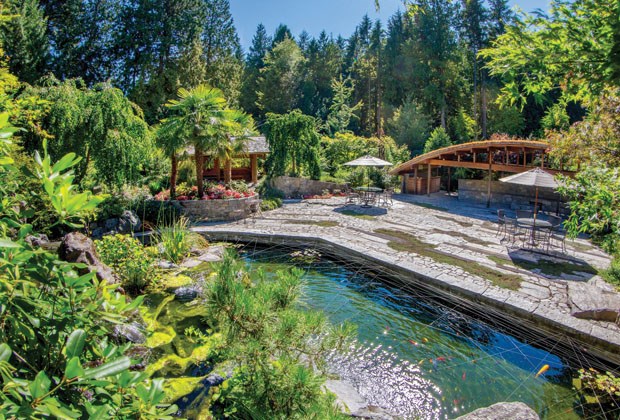I recently had the privilege of judging the B.C. Landscape Awards of Excellence for outstanding landscape design, construction and maintenance.
I can report that there are some very interesting gardens being built around our province.
For the past 33 years the B.C. Landscape and Nursery Association has administrated the annual B.C. Landscape Awards of Excellence. The association represents wholesale nursery growers, garden centres, landscape designers, landscape builders and garden maintenance companies.
Designed to showcase the best workmanship in B.C.'s landscape industry, the program uses a stringent set of judging guidelines to evaluate participants. Design, hardscaping, softscaping and maintenance are all judged on use of best practises, creativity and quality of build.
It's probably been 10 years since I judged this program and I was happy to see that the judging criterion has grown to reflect changes in society. For example, the use of recycled materials is now valued. Sustainability and environmental stewardship have also been included, which are very important concepts for the industry to stop resisting and fully embrace. Universal accessibility, water conservation and pesticide alternatives are also now considered in the judging process. Those are all important improvements to the judging criteria indicating a step forward for the industry as a whole and undoubtedly the way of the future.
This year 12 companies entered in various project categories ranging from $5,000 to more than $120,000. Some very challenging sites were part of this year's competition. I was amazed to see where and how people decided to build gardens. Some excellent creativity was evident in all projects this year. There was also an impressive range of building materials used to create the various entries.
Once again, or perhaps still, stone, whether natural or manufactured, was the primary building material used in most projects. Stone is timeless, it's a little more expensive upfront but it pays dividends over time in lower maintenance and in the staying power of the design.
There were also some entrants that removed all lawn from the client's front yard to install water features integrated with stone walkways and lavish planting beds. Those were very cool gardens that reflect society's changing value system for lawn use in landscape design.
As a designer and builder myself, it's a rare and unusual opportunity to experience the creations of other professionals with such intimacy. I appreciated the naturalistic style of many of the designs, a trend that continues to resonate with homeowners.
The stone work done by Ogawa Landscape Design in their temple-like garden was stunning. Their patio was intricately created out of varying stone sizes with moss beds woven into the expansive stone surface. The patio was integrated into a temple-like, openstyle house and a koi pond with boulders and planting surround.
Another project had some very interesting horizontal privacy screening that wrapped around part of a large paving slab deck that surrounded a swimming pool. Those screens have changed my mind about horizontal versus vertical fencing. I know that vertical fencing sheds our rainfall better but the lines of that horizontal fence dramatically enhanced the space, giving it an elegant and sophisticated look and feel.
The hard work that went into overcoming site challenges was also noteworthy this year. Site topography and access are often the most difficult factors to manage during landscape construction. From the steepest lots to the flattest, topography plays an important role in determining how the garden can be built and what the final design's potentiality will be. Other existing features like low spots, large boulders, existing trees, drainage issues and the sun's aspect play important roles in developing any design. I recommend that any new design consider such existing features for integration into the new design. It's cheaper with a lower environmental impact.
Some of this year's constructors did recycle materials onsite, saving cost and lessening the carbon footprint of construction while enhancing the final outcome. Existing topography and site access are primary cost drivers for landscape construction projects.
The overwhelming trend for me this year was the creation of sanctuary. For some people, sanctuary is an intellectual framework with defined constructs. For others it's a concept that is based in spirituality and emotion depending on the person and their cultural beliefs. It has been the only real trend in landscape design for as long as I have been in the industry.
Another feature that all of the projects had in common was a thorough design process, use of the association's landscape standards during construction and the creation of a sense of place. The creation of a sense of place has always been the focus of most good designs and probably the desire of most people.
To find out more about the B.C. Landscape Awards of Excellence and to see pictures of this year's winning projects, visit bclna.com.
Todd Major is a journeyman horticulturist, garden designer and builder, teacher and organic advocate. [email protected]



